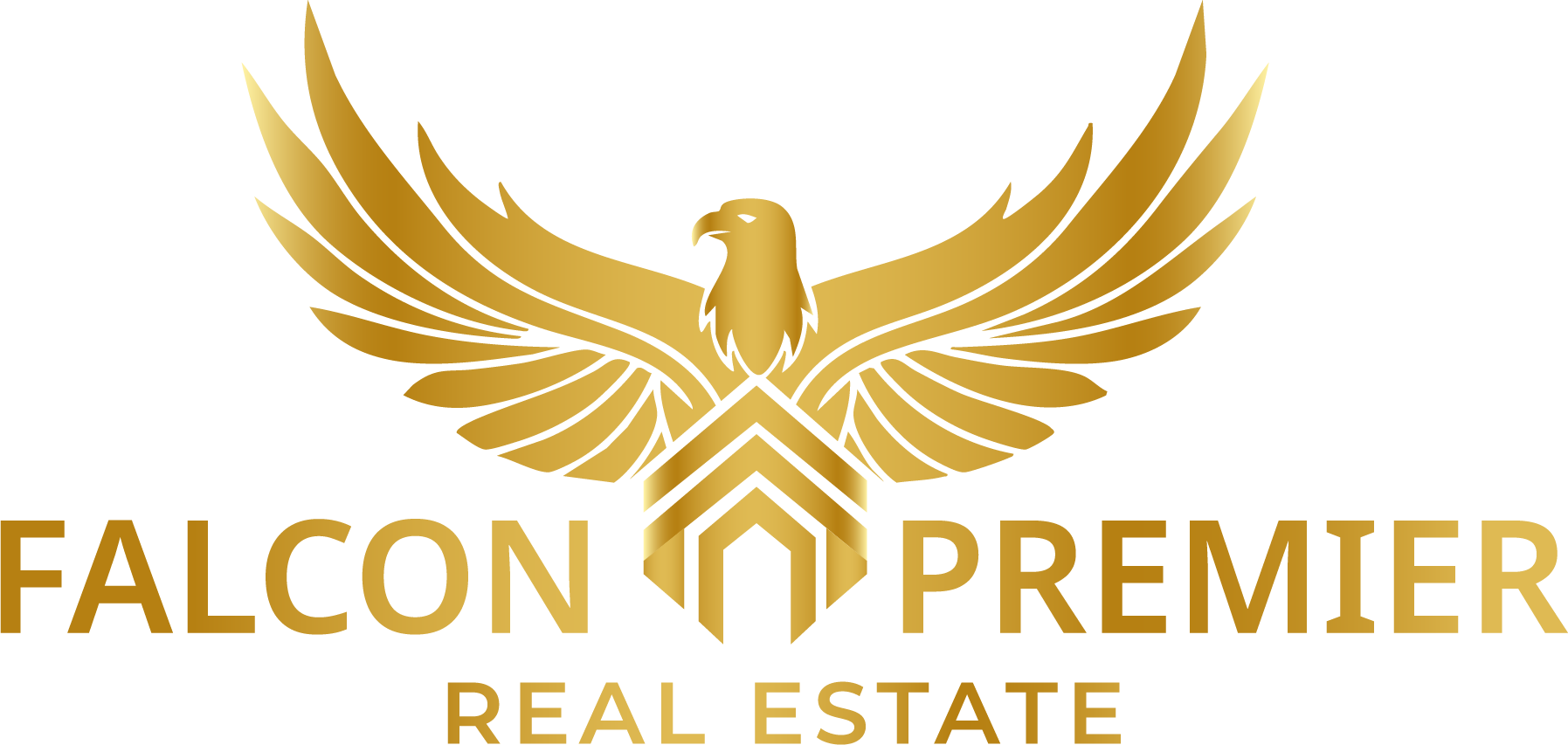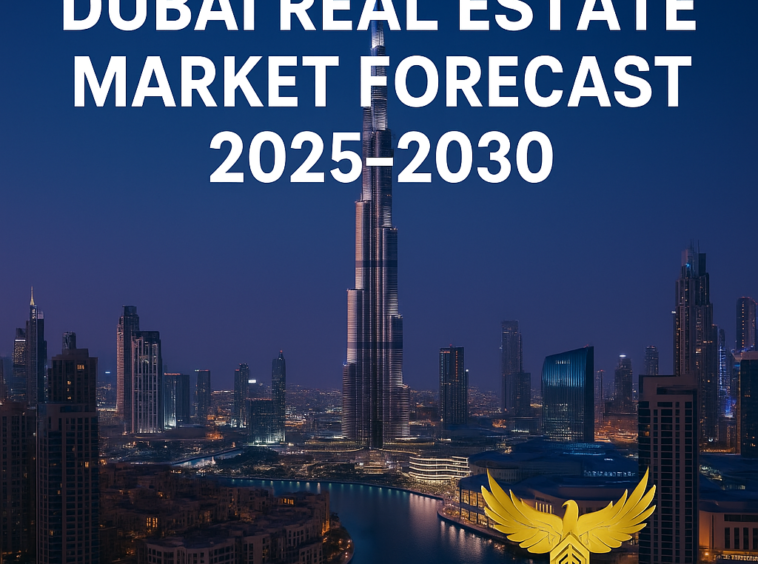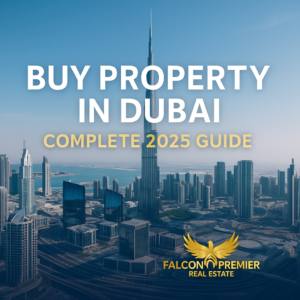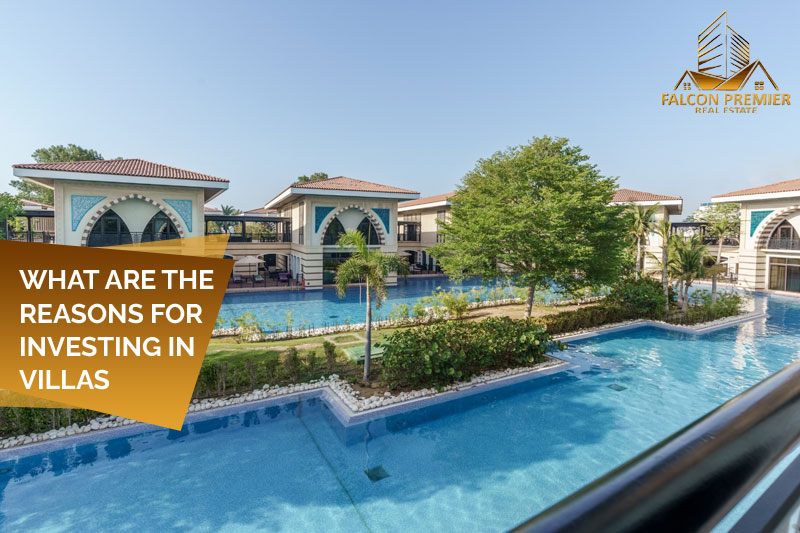Dubai’s real estate market continues to attract global capital, backed by resilient fundamentals, strategic policy support and a rapidly evolving demographic profile. Looking ahead to 2025-2030, the question for investors, home-buyers and developers is: How will this market perform, and where will the value emerge?
At Falcon Premier Real Estate, we’ve analysed latest reports, transaction data and macro-economic drivers to present this comprehensive guide to the Dubai real estate market forecast 2025-2030 — helping you align your strategy with future growth.
1. Current Market Snapshot: Setting the Baseline
- In the first half of 2025, residential transaction volumes in Dubai surged significantly, with many reports noting double-digit year-on-year growth.
- According to analysts, the UAE residential real-estate market (including Dubai) is projected to grow at a CAGR of ~5.1% between 2025-30.
- While demand is strong, leading rating agencies such as Fitch Ratings highlight potential price corrections in certain segments due to incoming supply, forecasting up to a 15% drop in some condo markets in 2026.
These seemingly mixed signals underline the importance of segment-specific strategies rather than blanket predictions.

2. Key Growth Drivers for 2025-2030
2.1 Economic Diversification & Population Growth
- Dubai’s strategic plans (such as the “D33” economic agenda) target doubling the size of the economy by ~2033, creating demand for both residential and commercial real estate.
- Dubai Statistics Centre forecasts suggest ongoing population growth (citizens + expats), especially of high-income professionals, which supports demand for housing across mid-to-premium segments.
2.2 Investor-Friendly Regulations & Global Mobility
- Policies such as 100 % foreign ownership in many sectors, the Golden Visa programme and more flexible residency rules continue to attract overseas investors.
- These regulations underpin the “safe haven” status of Dubai real estate, especially relative to global uncertainty.
2.3 Supply Management and Master-Planning
- Regulatory oversight of new developments (via the Higher Committee for Real Estate Planning) has reduced the risk of uncontrolled oversupply — improving structural market balance.
- Major infrastructure projects (malls, transport, logistics hubs, new free-zones) enhance location value and attract both resident and investor demand.
2.4 Shift to End-Use Demand & Quality of Life
- A structural shift from speculative investment to genuine end-user occupancy is underway. This supports pricing stability and sustainable growth, especially in well-located, quality developments.
3. Forecast by Property Segment (2025-2030)
3.1 Residential Housing
- Mid-to-premium apartments & townhouses: Expect annual growth of ~5-7% in value in well-positioned communities.
- Villas & detached homes: These remain relatively undersupplied in prime areas — potentially higher growth of ~7-9% per annum in top locations.
- Rental yields: Net yields for rental properties are expected to stay in the ~5-7% range for good value areas; prime luxury villas may yield lower but with stronger appreciation.
3.2 Commercial Real Estate (Office / Retail)
- Grade A office space in business districts will benefit from Dubai’s positioning as a regional HQ hub. Demand growth is expected, with moderate upward pressure on rents.
- Retail markets will evolve: physical retail remains but is increasingly experience-oriented; mixed-use developments combining retail, hospitality and living will attract investor interest.
3.3 Off-Plan & Mixed-Use Developments
- Flexible payment plans and early-entry discounts will continue to be key in off-plan launches through 2027-28.
- Mixed-use neighbourhoods with strong amenities, transport links and smart-city features will outperform generic supply.
4. Top Emerging Locations for 2025-2030
Here are neighbourhoods showing strong positioning for future growth:
- Dubai Creek Harbour – waterfront, mega-city cluster, world-class urban design.
- Dubai South – anchored by Al Maktoum International Airport and Expo City.
- Mohammed Bin Rashid City – aspiring luxury & lifestyle hub.
- Mid-value communities such as JVC, DIP and Arjan — especially for value investors seeking rentals.
5. Risks & Mitigating Factors
- Supply overhang: Some markets (especially mass-market apartments) face a surge in supply long-term. Rating agencies warn of corrections.
- Interest-rate / global economy: While Dubai is resilient, global headwinds (higher rates, inflation) impact investor sentiment.
- Segment disparity: Not all districts/segments will perform uniformly — micro-location, quality and developer credibility matter more than ever.
- Regulatory changes: Continuous evolution in visa / free-zone / ownership policies must be monitored.
6. Investor Strategy & Action Plan
- Focus on prime locations and well-connected master-planned communities.
- Prioritise quality developers with proven track records and robust hand-over ability.
- Assess property type based on purpose: yield vs long-term growth.
- Understand total ownership cost (service charges, maintenance, utilities).
- Stay diversified: combine residential, mixed-use and possibly commercial exposure if it fits your risk profile.
🏁 Conclusion
In summary, the Dubai real estate market forecast 2025-2030 points to sustained growth — though with more maturity and segment differentiation than in past cycles. For intelligent investors and home-buyers, this means:
- Solid capital appreciation prospects (+5-9% per annum in strong segments)
- Healthy rental income potential
- Benefiting from strong demographics, regulation, and global positioning
At Falcon Premier Real Estate, we specialise in identifying the right opportunities, navigating risks and aligning your investment with future-proof trends.
📞 Ready to explore your next move in Dubai’s dynamic real estate market? Contact Falcon Premier Real Estate or WhatsApp us at +971 54 279 1796 for tailored advice and access to exclusive opportunities.









